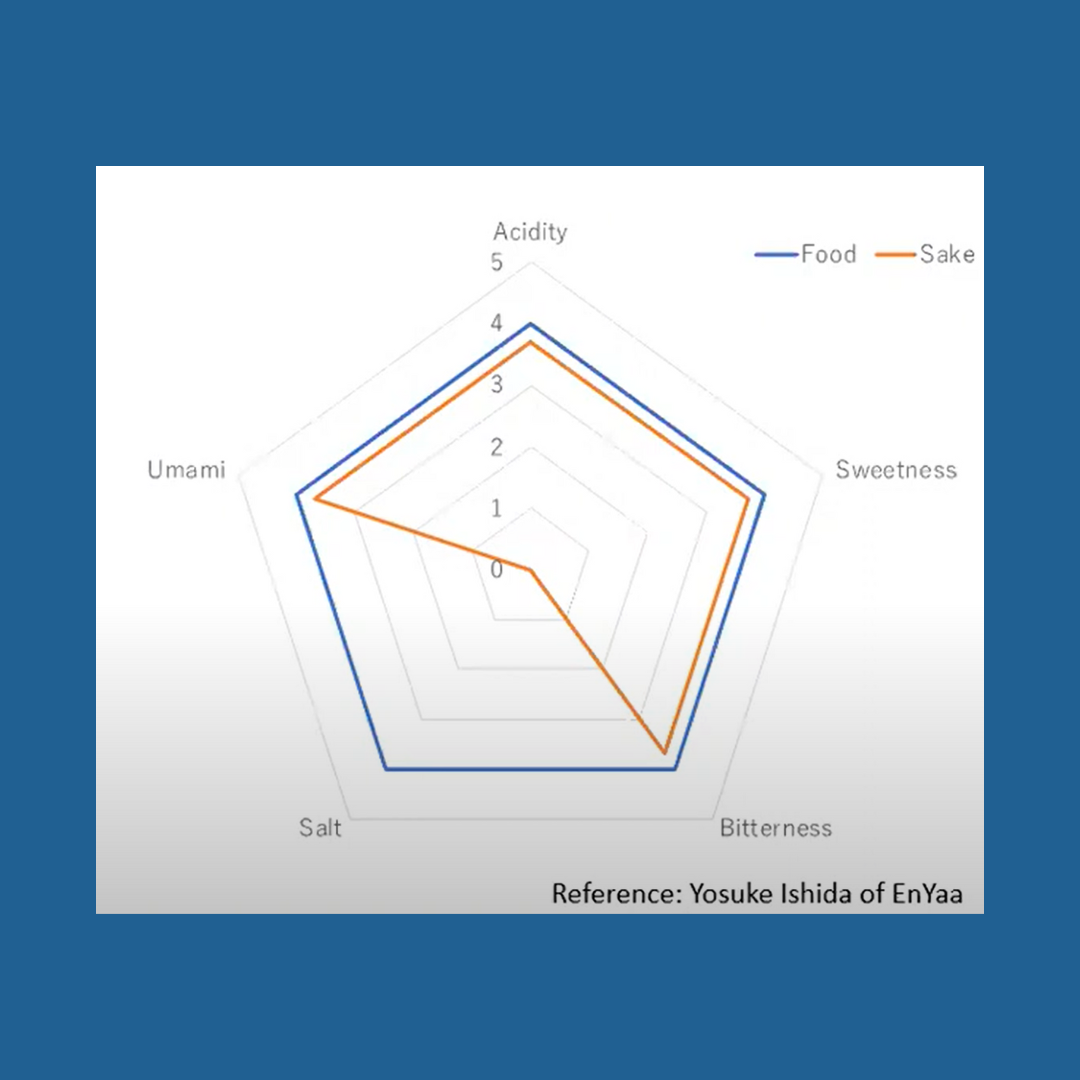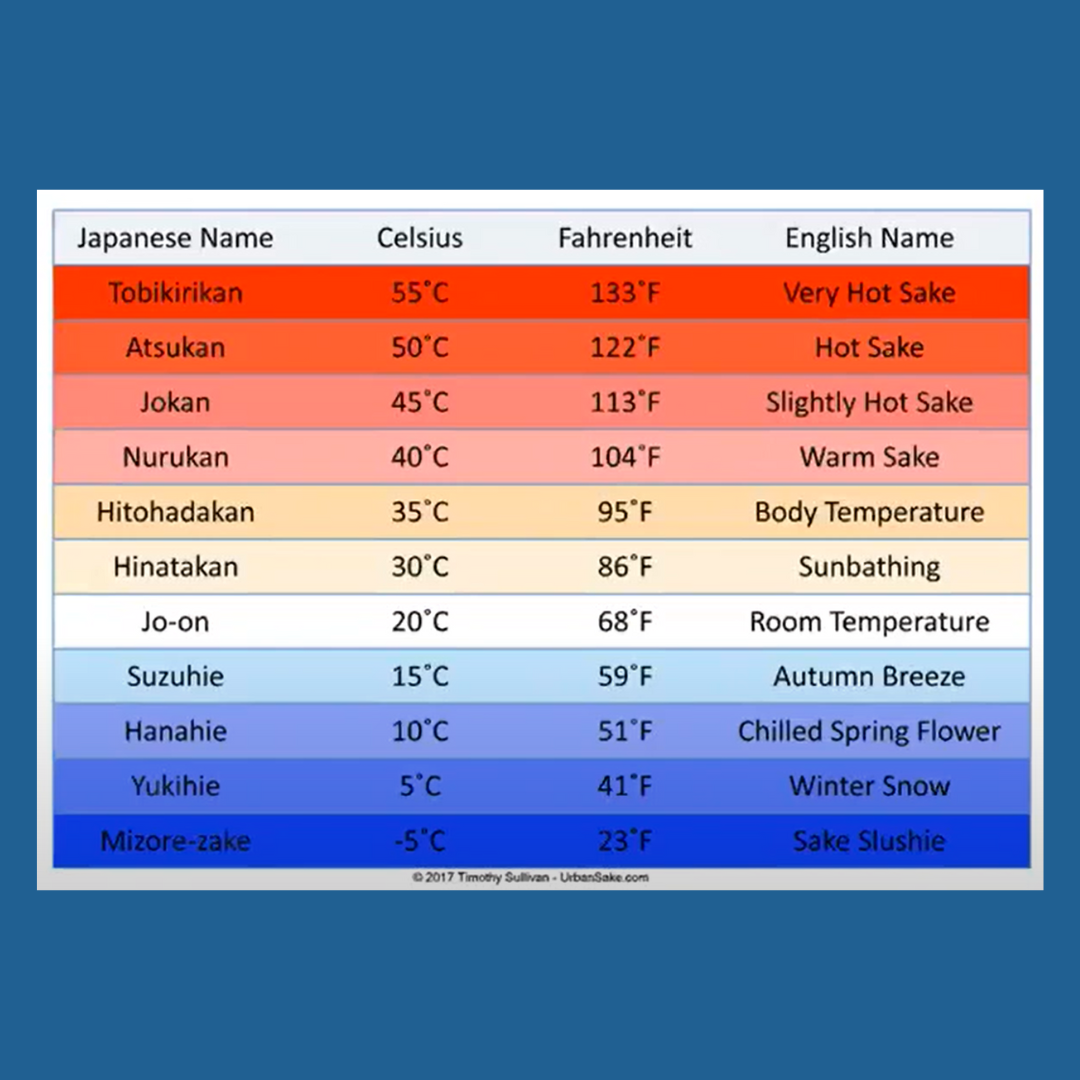With its delicate acidity, umami depth and silky textures, sake is one of the most food-friendly drinks around. Yet too often it’s pigeonholed as a sushi-only option. In this expert guide, Sake Samurai and WSET School London educator Natsuki Kikuya shares her insights from a recent webinar exploring the full potential of sake and food pairing - from traditional Japanese cuisine to unexpected global matches.
Why sake pairs so well with food
Sake is known for its smooth mouthfeel, low acidity, and high umami content. It contains no tannins and very little bitterness, which means it rarely clashes with food. This makes it an especially versatile drink to pair with dishes that can trip up wine - think asparagus, eggs, artichokes, and caviar.
In Japan, sake is often served alongside multiple dishes at once rather than in a course-by-course format. At izakaya (Japanese gastropubs), meals are all about sharing: small plates of meats, vegetables, pickles and soups arrive together. Diners mix and match flavours, with sake serving as the constant thread that brings harmony to the table.
“Sake never fights with food,” says Natsuki. “It’s not about precision pairing -it’s about harmony.”
And yet, Natsuki cautions against overusing the claim that “sake pairs with everything.”
“It’s not that sake always pairs with food - it’s that it adapts. True pairing comes from understanding what each component brings to the table.”
Four essential approaches to pairing sake
In this webinar on sake and food pairing, Natsuki introduces four practical pairing approaches drawn from both tradition and innovation:
1. Match the intensity
Pair the weight and richness of the dish with the weight and richness of the sake.
- Light dishes like sashimi or steamed veg? Try a crisp honjozo.
- Rich, fatty, or grilled foods? Go for a kimoto, yamahai or aged junmai with more umami and viscosity.
Natsuki illustrates this using tuna as an example: raw sashimi-style tuna demands a delicate sake, while a seared version or smoky, dried tuna calls for something bolder and rounder.
“Same ingredient, three preparations - three different pairing needs.”

Raw, sashimi-style tuna pairs really well with a delicate sake.
2. Balance the five flavours
Great pairings harmonise sweetness, sourness, saltiness, bitterness, and umami.
Sake’s low acidity and pronounced umami mean it can fill in flavour gaps.
- A salty, bitter sardine dish with pickled plum benefits from sake with a touch of sweetness and acidity.
- Umami-rich foods (like mushrooms or aged cheese) shine when matched with umami-rich sake.
Natsuki also mentions Yosuke Ishida’s “radar chart” method, a visually intuitive way of evaluating and pairing sake. Using a spider chart, you plot the intensity of five key flavour attributes—sweetness, acidity, bitterness, umami, and saltiness—on a 0–5 scale to create a flavour profile. The idea is to choose a dish that either complements (by mirroring) or contrasts (by filling in) the sake’s flavour gaps. For example, a sake low in acidity but high in sweetness and umami might pair well with a dish offering brightness and salt. This approach encourages balance and depth, helping both the food and the sake to shine more vividly together.

Yosuke Ishida's "radar chart", taken from Natsuki's presentation.
3. Pair by similarity (congruent pairing)
Look for shared aromas, textures or finishes.
- Truffle butter scallops with earthy kimoto.
- Pesto pasta with fruity ginjo (especially those with melon or floral aromas).
- Crème brûlée with slightly aged namazake that has hazelnut or caramel notes.
“Think umami with umami, or creaminess with creaminess,” Natsuki says. “It creates a layered, echoing effect on the palate.”
Even Japanese dashi stocks follow this idea: different types of umami (from kelp, fish, mushrooms) combine to build depth.
4. Pair by contrast (complementary pairing)
Sometimes contrast makes magic.
- Indian curries (butter chicken, tandoori lamb) with aromatic ginjo. The spices open up the sake’s floral notes.
- Tacos with lactic, cloudy nigori. The creamy texture helps soften heat and bold seasoning.
- Blue cheese with aged, viscous kijoshu or a sweet daiginjo. The sake’s richness counterbalances the cheese’s pungency.
“Add a pinch of salt to watermelon - it tastes sweeter. That’s the power of contrast,” Natsuki says.
Temperature: a hidden tool in pairing
Sake is one of the only alcoholic drinks that can be enjoyed across such a wide temperature range. Each 5°C shift reveals a different character.
Warming sake enhances sweetness and softens bitterness, especially around 40–45°C. Beyond 50°C, sweetness drops and the sake can taste hotter and drier.
In Japan, these temperature stages are given poetic names that reflect both seasonal imagery and the sensory experience of drinking sake. These are often literal or symbolic references to temperature in nature or daily life:
- Mizore-zake (0–5°C): Named after mizore (霙), meaning sleet or wet snow—this refers to sake served near freezing, sometimes with a soft, slushy texture.
- Yuki-bie (5–10°C): Snow-cold - crisp and refreshing, ideal for delicate, aromatic sakes.
- Hanabie (10–15°C): As cool as cherry blossom season - subtle and refined, often used for light, floral ginjo.
- Suzubie (15–20°C): Cool breeze - gentle and smooth, this stage balances freshness and softness.
- Jōon (20–25°C): Room temperature (literally “constant temperature”) — a neutral stage for appreciating a sake’s full structure.
- Hitohadakan (35–40°C): Body temperature - warming but subtle, enhancing sweetness without harshness.
- Nurukan (40–45°C): Gently warm - often described as soothing, ideal for richer junmai styles.
- Jōkan (45–50°C): Comfortably hot - round and mellow, reduces bitterness and boosts umami.
- Atsukan (50–55°C): Hot - bold and dry in flavour, a traditional favourite in colder seasons.
- Tobikirikan (55–60°C+): Piping hot - the most intense stage, often used for rustic, robust sake but best used sparingly.
Each temperature brings out different aspects of the sake: warming enhances sweetness, smooths bitterness, and softens acidity, while chilling emphasises clarity and crispness.
“Use temperature like a dial - turn up the sweetness or tone it down depending on the dish.”
This makes temperature an incredibly useful tool for fine-tuning pairings:
- Want a sake to feel drier? Warm it up past 50°C.
- Want to balance salty or bitter dishes? Heat gently to bring out sweetness.
- Serving something spicy or zesty? Chill your sake to highlight freshness.
Tip: To warm sake gently, place it in a heat-safe carafe inside a bowl of hot water (not directly on the hob). Use a thermometer for accuracy and avoid boiling to preserve flavour nuance.

The ideal serving temperatures.
Global dishes that shine with sake
One of Natsuki’s goals is to challenge the idea that sake only works with Japanese food. In the webinar, she offers a range of global pairing suggestions - each with a clear rationale:
- Fresh oysters with crisp honjozo (for cleansing) or richer daiginjo (for creamier styles). The minerality of oysters is lifted by sake’s umami and smooth texture.
- Pho with warm, gentle junmai. The mellow broth and herbs echo sake’s softness, creating a seamless, comforting pairing.
- Indian butter chicken with ginjo. The sake’s floral aroma and acidity cut through the rich, spiced cream sauce.
- Tacos with coriander, spice and crema. Nigori’s sweetness and creamy texture balance bold heat and sharp garnishes.
- Blue cheese with sweet kijoshu or aromatic daiginjo. The intense saltiness of the cheese is mellowed by sake’s residual sugar and umami.
- Crème brûlée with nutty aged sake. Roasted, caramelised notes in both elements create a harmonious dessert match.
Hosting your own sake pairing night?
Natsuki’s practical tips:
- Choose a flexible sake like honjozo or junmai if serving lots of different dishes.
- Offer one sake at two temperatures to show contrast.
- Pair sets of dishes (not each individual bite) to keep things relaxed.
Want to go deeper?
Curious to hear Natsuki explain these concepts in more depth? Watch the full webinar, Sake and Food Pairing, hosted by WSET School London. It’s packed with practical tips, cultural insight and real-world examples.
Explore the world of sake further with WSET’s Level 1, Level 2 or Level 3 Sake Qualifications.


